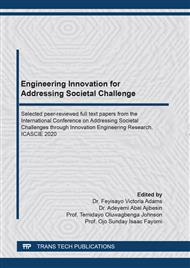p.137
p.144
p.151
p.159
p.174
p.182
p.194
p.203
p.209
Anomaly Detection of Budgetary Allocations Using Machine-Learning-Based Techniques
Abstract:
In Nigeria, a crucial responsibility of the executive arms of the government is to submit annual budgetary allocations to the national assembly for approval. Due to the diversity and complexity of the budget, the national assembly is mandated to carry out its constitutional duty of scrutinizing the budget to discover irregularity or anomaly, make recommendations, or substantial modification upon what it received. This is very challenging, particularly in Nigeria where there are many different ethnicities and regional, to ensure inclusiveness, the national assembly must carry out its constitutional duty diligently and carefully without fear or favor that often has unintended consequences. This might not be very easy to accomplish within a short period. Thus, this research aims at detecting an anomaly in the budget that will ease the legislative duty thereby facilitating the process of appropriation. The concept of Clustering for Machine learning technique was used for the detection of an anomaly, where the detected ones are noted and indicated for critical examination.
Info:
Periodical:
Pages:
174-181
Citation:
Online since:
June 2021
Keywords:
Price:
Сopyright:
© 2021 Trans Tech Publications Ltd. All Rights Reserved
Share:
Citation:


